כללי
תחבורה
אנשים
אירוח
אוכל ושתייה
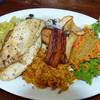 What is the local food like in Costa Rica?
What is the local food like in Costa Rica?
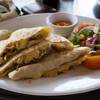 What local dishes to try in Costa Rica?
What local dishes to try in Costa Rica?
 אילו מקומות יש לאכול?
אילו מקומות יש לאכול?
 מה ניתן לאכול בקוסטה ריקה כטבעוני?
מה ניתן לאכול בקוסטה ריקה כטבעוני?
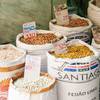 כמה עולה האוכל?
כמה עולה האוכל?
 אני יכול לשתות מים מהברז בקוסטה ריקה?
אני יכול לשתות מים מהברז בקוסטה ריקה?
 What soft drinks are available?
What soft drinks are available?
 האם יש תרבות של קפה ותה בקוסטה ריקה?
האם יש תרבות של קפה ותה בקוסטה ריקה?
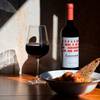 Where to buy alcohol in Costa Rica and how much does it cost?
Where to buy alcohol in Costa Rica and how much does it cost?
 מהן ההגבלות בנוגשים לצריכת אלכוהול?
מהן ההגבלות בנוגשים לצריכת אלכוהול?
ביקור באתרים
משפטי
כסף
בטיחות ובריאות
נסיעות משפחתיות
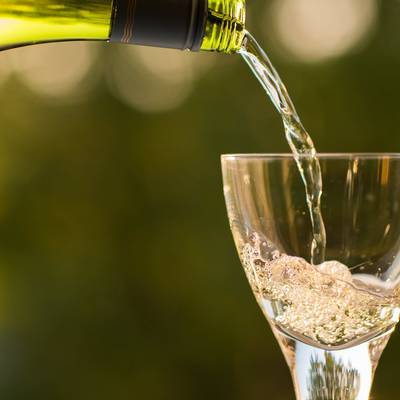
What alcoholic drinks to try while in Costa Rica?
Cerveza. Are you a beer drinker? If so, you’ll be pleased to know that liquor stores and grocery stores throughout Costa Rica are regularly stocked with cerveza (“beer”). Costa Rica’s bestselling beer, Imperial, is an American-style lager that’s well-loved by many North American visitors. It’s also the face of beer in Costa Rica; Imperial ads are plastered across billboards, commercials roll on televisions, and the brand sponsors tons of events yearly, including the country’s biggest party in Pavones. On a more serious note, Imperial is a water positive beer, which makes it a great choice for eco-conscious travelers. If you’re calorie-conscious, try “Imperial Light.” Pilsen, Costa Rica’s older, bolder, and more bitter-tasting beer, is the favorite of some Ticos. It’s comprised of 5.1% alcohol content, which is boozier than Imperial at 4.5%. Other beer, including Bavaria, Rock Ice, and popular imports like Budweiser and Corona are also sold in Costa Rica, though to a lesser extent. Gaining popularity over the past decade are craft beer creations. Several microbreweries exist around the nation, and their brews are often featured at bars and restaurants in beach towns and San Jose.
Chicha. Typically consumed by members of Indigenous communities in Costa Rica is the fermented drink chicha. Offering a taste similar to beer, chicha is an inexpensive alcohol most commonly made with rice, corn, or pineapple in Costa Rica.
Guaro. Guaro is Costa Rica’s signature spirit. Produced from sugarcane, it’s slightly sweet, but otherwise tastes like a cheap vodka. As one of the least expensive liquors you can buy in Costa Rica, guaro flies off the shelf. The highest quality guaro you can get in Costa Rica is produced by the Cacique brand (look for Cacique Superior, which has a black label instead of a red label, if you want the brand’s best product). Despite its prestige, Cacique guaro still comes cheap. You’ll probably find any kind of guaro too unpleasant to drink on its own (though plenty of people take shots of the stuff) but you may enjoy it mixed in a cocktail. Guaro sours, which offer a twist on whiskey sours, are a popular choice. Chiliguaros spice things up: they include mandarin lime, Tabasco sauce, and salt, and can be consumed as a cocktail or a shot. Other alcoholic orders tend to include guaro, namely because its such an inexpensive liquor to serve.
Rum. After guaro, rum is the drink of choice of most Ticos. The brand Ron Centenario is a popular pick, which ranges in price according to its age. There's usually a difference in the 12-year rum compared to the younger varieties. Products older than 12 years are also available. Rum (of many brands) can be purchased in Costa Rica at liquor stores, grocery stores, and airport duty-free shops. Tons of drinks in Costa Rica are made with rum, including the ever-popular Cuba libre, which is a mix of rum and Coke. If you’re a fan of this drink, you can buy it in a can from grocery stores and liquor stores, if not from bars and restaurants. You may also hear locals refer to the cocktail as rum con Coca (“rum with Coke”).
Vino de coyol. If you’ve been to Costa Rica before, especially the Guanacaste province (part of which spans the Nicoya Peninsula), roadside cardboard signs that read vino de coyol (or simply “wine” for short) may have caught your eye. These signs advertise the sale of bottles of a fermented alcohol known as vino de coyol. Despite its nickname, make no mistake; the drink isn’t a type of wine. Produced from the sap of coyol palms, you might expect vino de coyol to be a thick, dark, sludge of a drink but most varieties are quite the opposite: cloudy, white concoctions that are light-tasting, a little sweet, and surprisingly airy. Some varieties, though, are noticeably heavier and come with stories of wicked hangovers, not to mention implications that the drink is “Costa Rica’s moonshine.” Give it a try, in moderate amounts, if you dare.

מה ניתן להביא הביתה מקוסטה ריקה?

אני יכול לשתות מים מהברז בקוסטה ריקה?
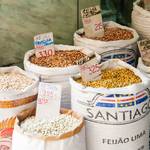
כמה עולה האוכל?

מהן ההגבלות בנוגשים לצריכת אלכוהול?

כיצד אני מבטיח את ביטחוני הנסיעה בקוסטה ריקה?
